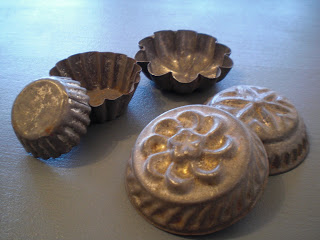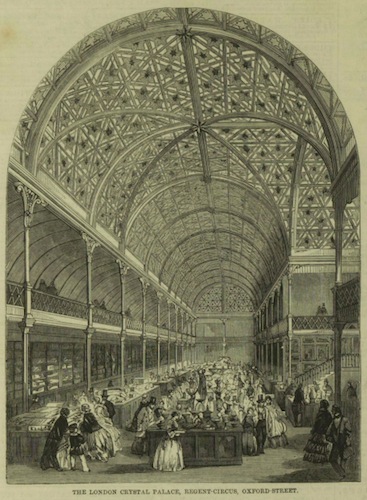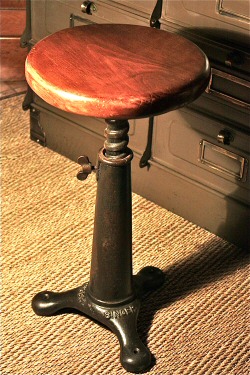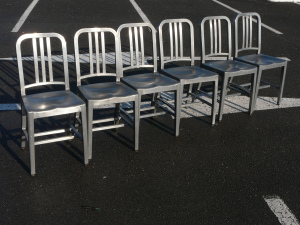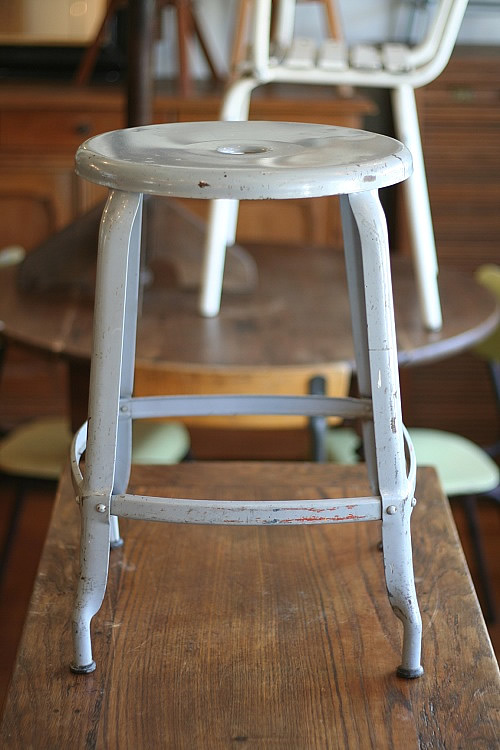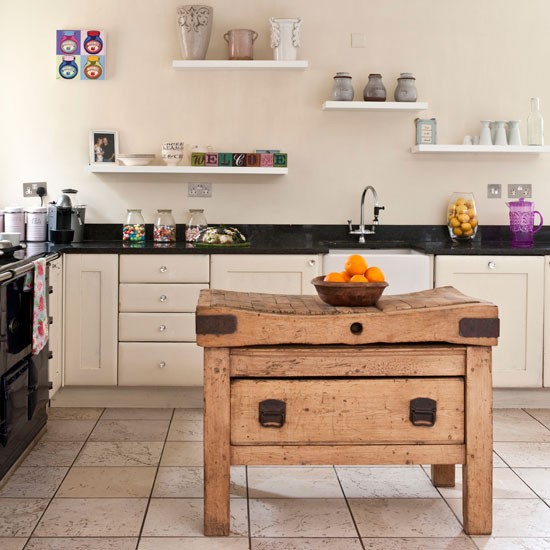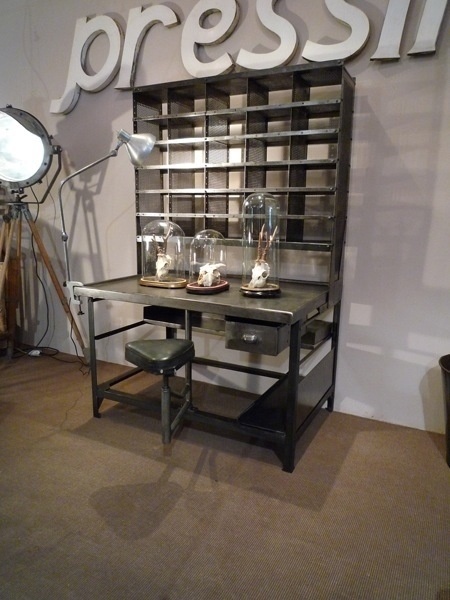What a fantastic and innovative lamp designed by Bernard-Albin Gras!
As its sister the Jielde lamp, the Gras Vintage Industrial Lamp takes a special place in the world of lightning history. Manufactured in 1922, it inaugurates a new kind of articulate lightning that corresponds to the Industrial need as well as the tertiary sector rapidly expanding. There are neither screws nor welded joints in the basic form. This is the lamp for industries and also for engineering firms, laboratories etc… up to the Normandie liner’s office. This lamp was used to light architect’ tables and artists’ studios as well as machine tools.
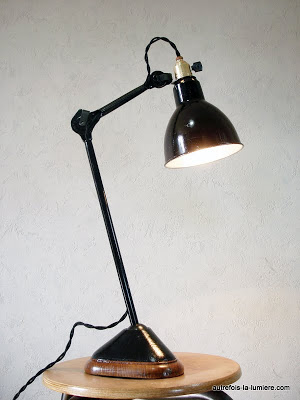
On the 13th of October 1921, Bernard-Albin Gras applies for the patent Number 531 001 for an Industrial Lamp. He was one of the most innovative designer of the 20th century. The functional esthetic of his lamps and especially the design of details such as those of the articulated brackets, supports and bases were truly original and far ahead of his time.
The next year, the lamp is manufactured by Maurice Bruneteau from Sainte-Suzanne, then it is Louis-Didier des Gachons who gets the production of the lamp in his company “L’Industrie du Tourniquet et du Classeur” (Revolving Rack and Cabinet Manufacturer). They both create a range with 23 models of the lamp for everybody in industries, offices and every working situation.
Finally, the lamp signed “Lampe ajustable” “GRAS” stamped “S.G.D.G.” is manufactured in 3 finishes: chrome, nickel and black enamel. Since it was first produced in the 1920s it has had an exemplary career without even the slightest modification in half a century, a record!

How she did became a legend?
At first it was Le Corbusier who was seduced by the modern design and user friendliness of the lamps and introduced it in his own offices, as well as employing it in numerous architectural projects all over the world. He was saying that it was a “tool-object” and he became one of the most enthusiastic supporters. Other people followed this trend as well, like Robert Mallet-Stevens, Eileen Gray, Jacques Emile Ruhlmann, Michel Roux-Spitz, some famous painters: Georges Braque and Sonia Delauney and so many others…
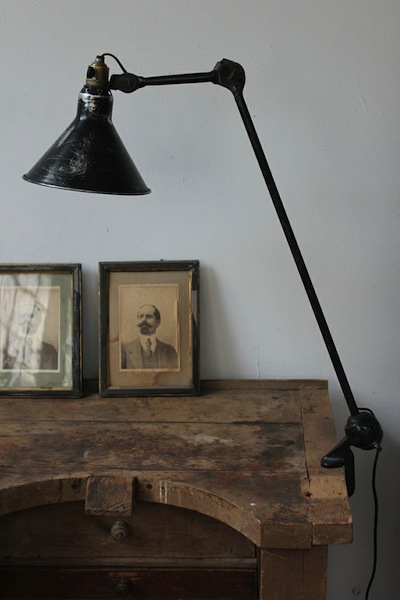
From june 1927 Louis-Didier des Gachons joins Jean-Ravel and in 1932, the Gras Lamp took the name: RAVEL lamp. This new lamp will be manufactured until 1970.
Today the lamp Gras has become a collector’s item all over the world, most notably in France, in the United States and in Japan. Bernard-Albin Gras’s talented and visionary design has proven to be timeless.
His lamp became an icon of the 20th century!
How to know the exact date of manufacture:
- 1921: the electric cord is completely out of the lamp
- 1922: the flat connecting rod is replaced by a hollow connecting rod to get the electric cord isolated, the stamp “Lampe ajustable GRAS” brevetee S.G.D.G.”
- 1927: stamped with “Ravel”
- 1930: stamped “Lampe ajustable D.G.R.”
- 1932: stamped “Lampe R.A.V.E.L. Clamart”
- 1960’s: green or grey colors
- 1970: composite wooden kneecap (permaly).
- 2008: Philippe Cazer and Frederic Winkler formed the DCW Company and reissued the Gras lamp.
The Gras Nowadays:
Since 2008, Philippe Cazer and Frederic Winkler formed the DCW Company and reissued the Gras lamp. The Gras lamp is reissued within 35 models in total and 2 special Gras furniture! Thus, the Gras lamp fits perfectly in every corner of your home or office!
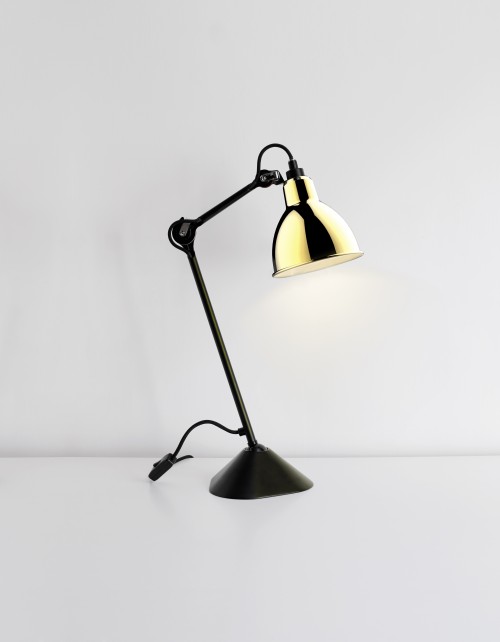
I personally find that the original vintage ones have so much character, let’s hunt them for antiques!
Discover all about its sister the Jielde lamp or check out all my Top 10 Favourite Industrial lamp!
More information about the Gras lamp:

